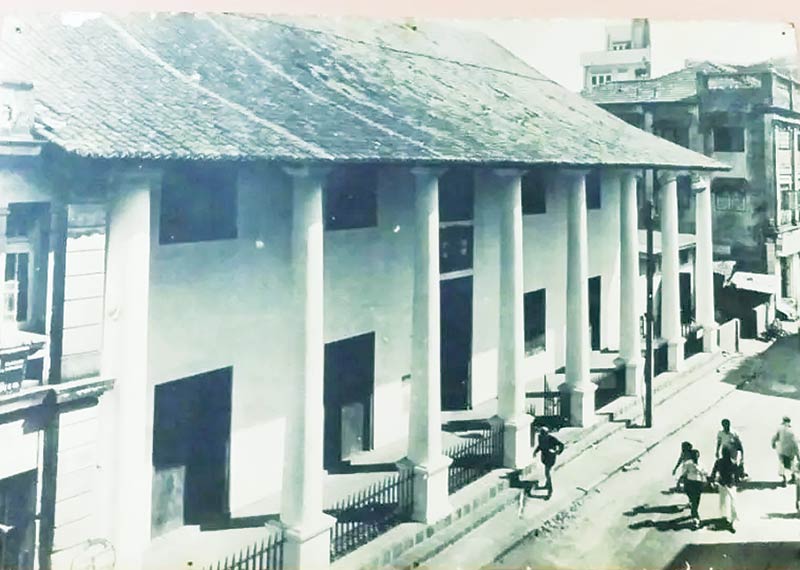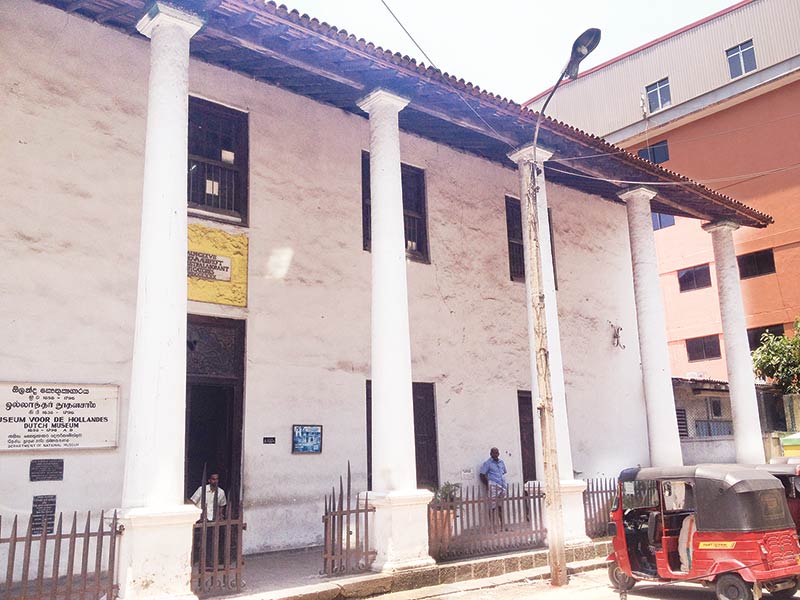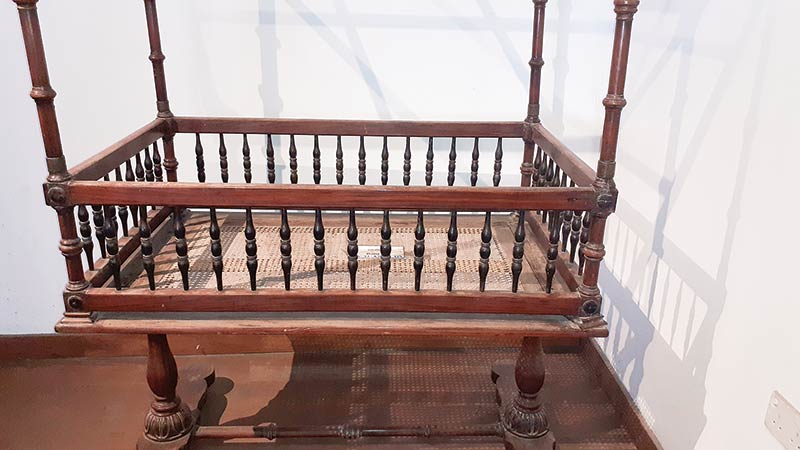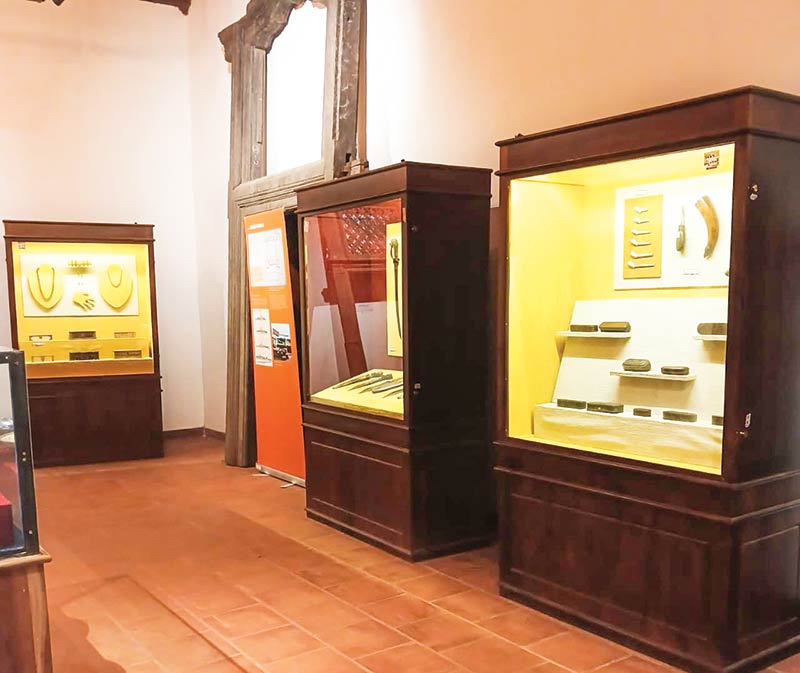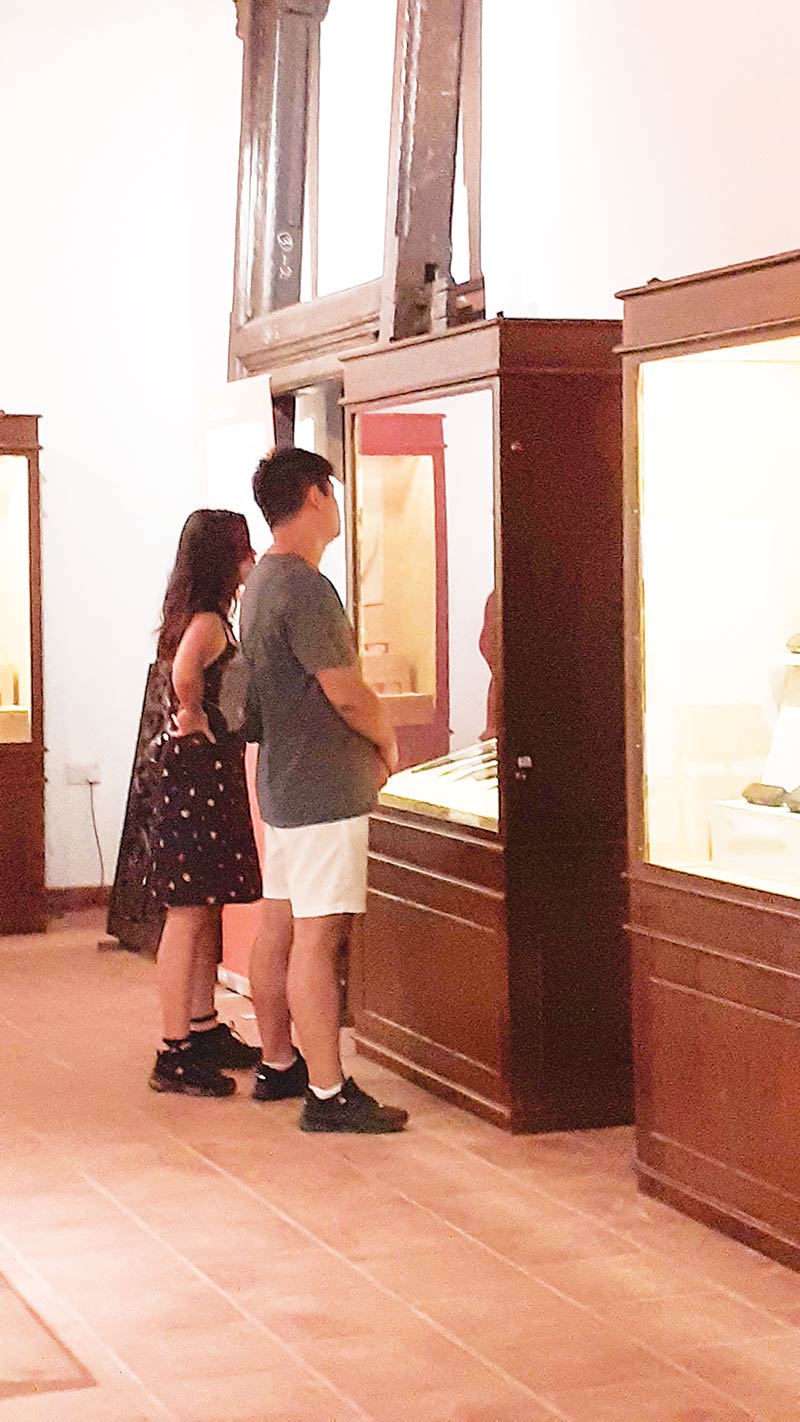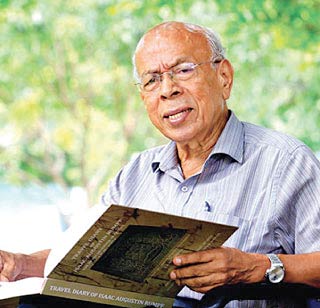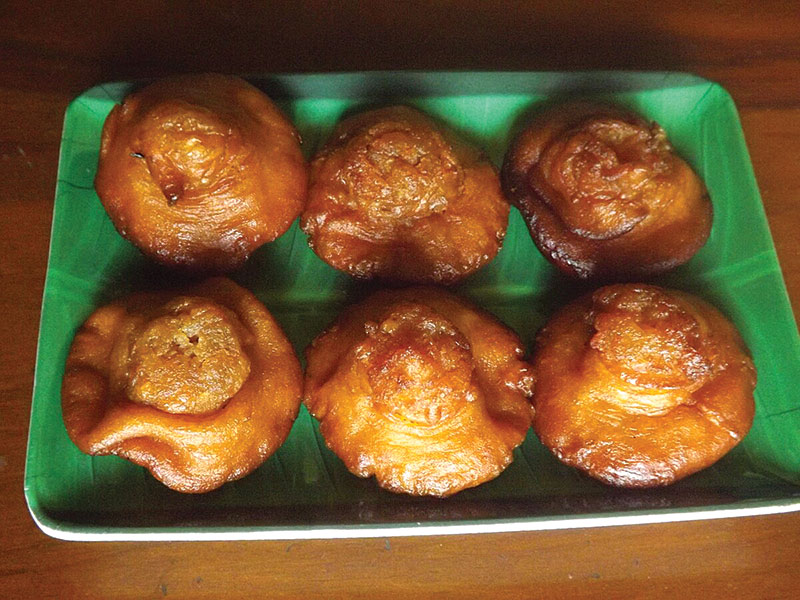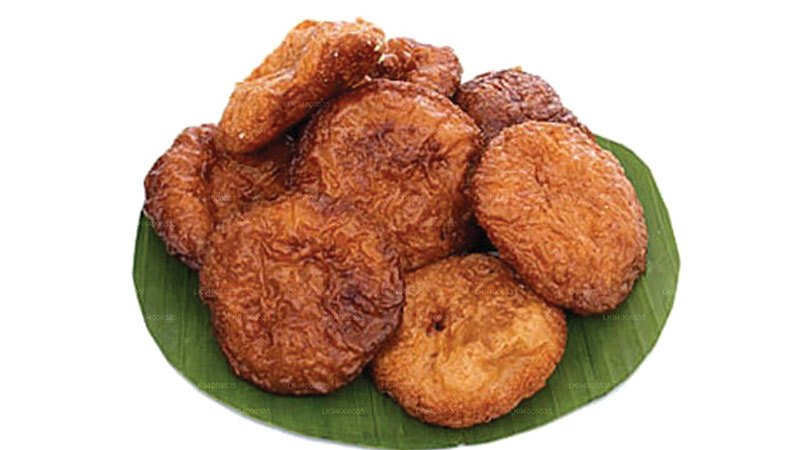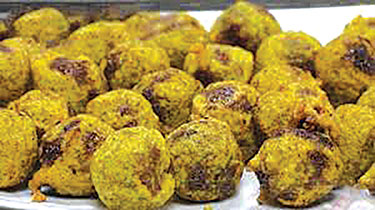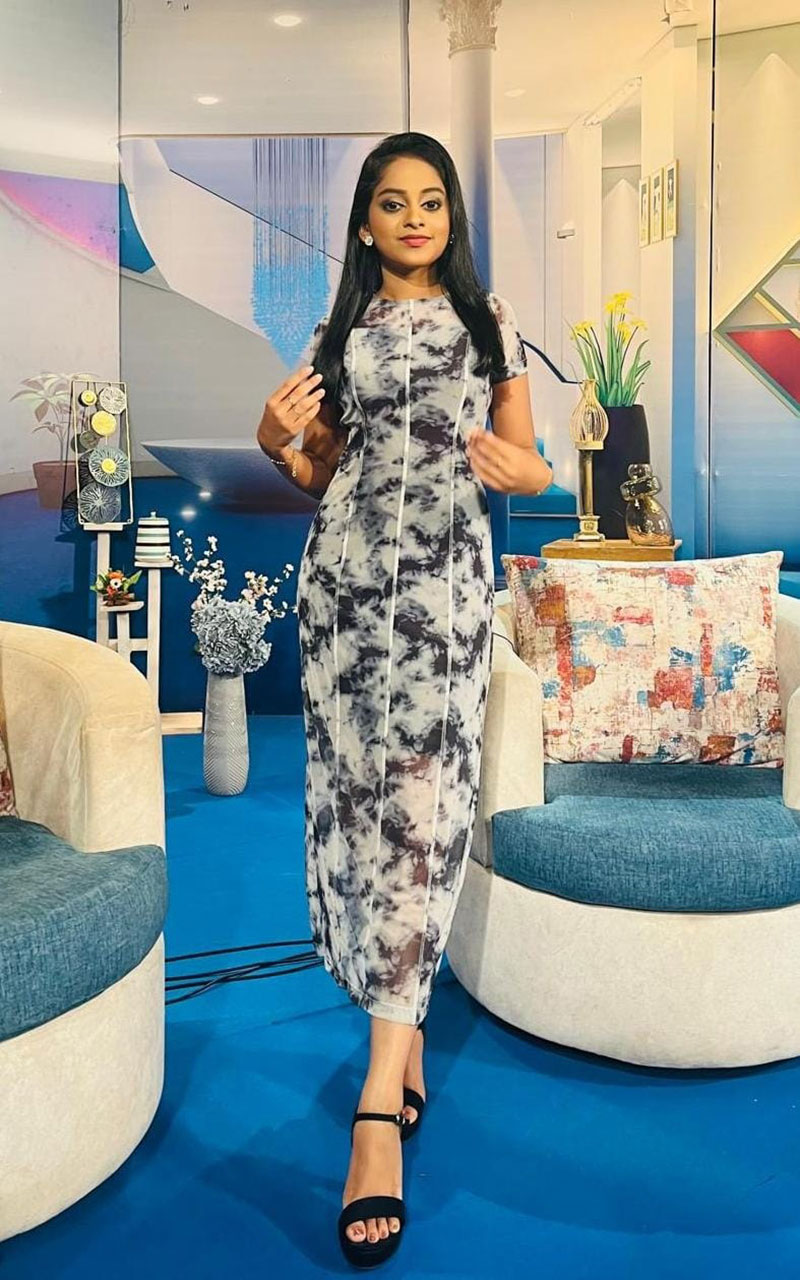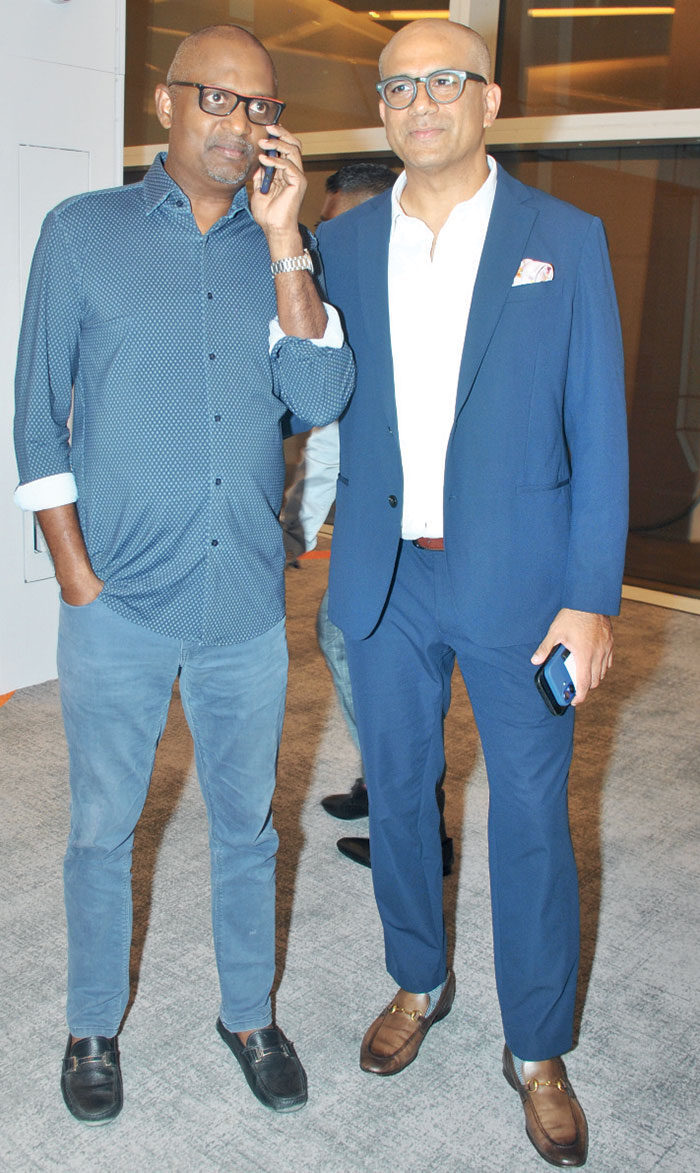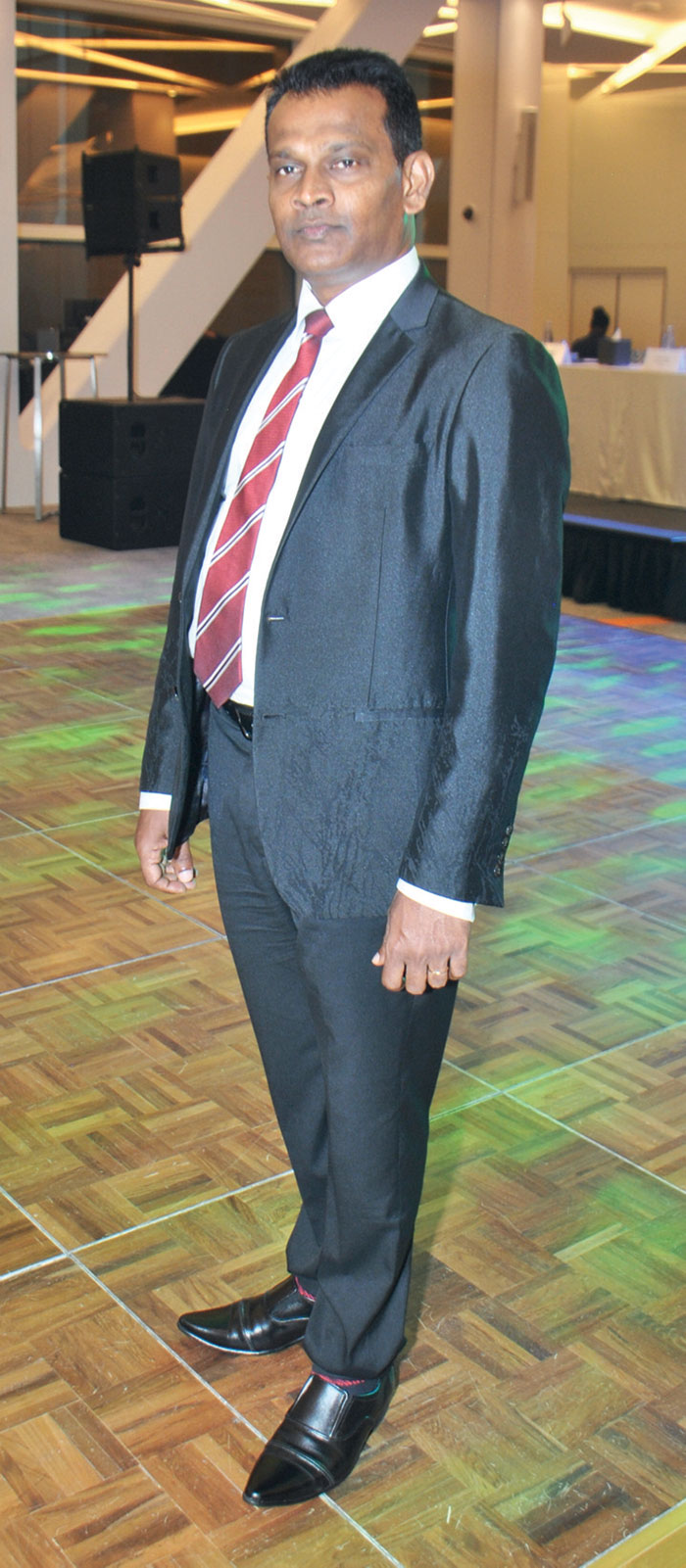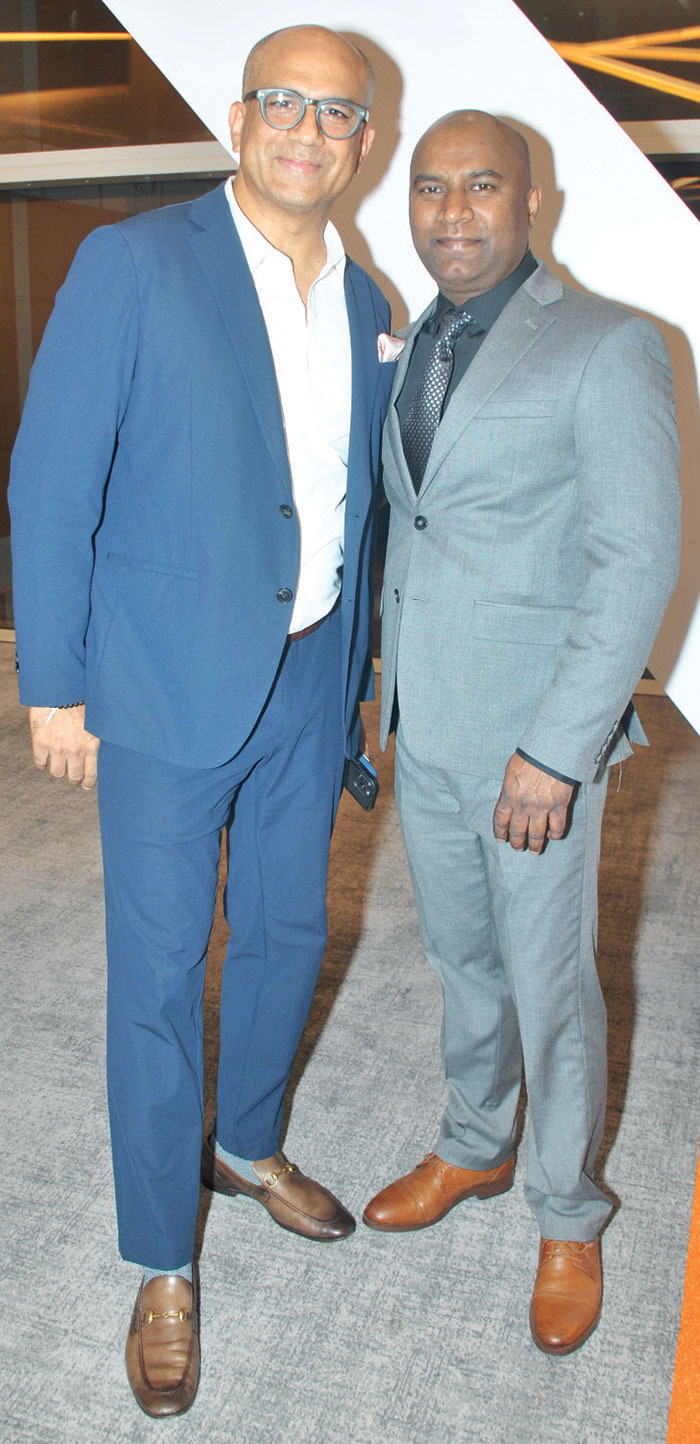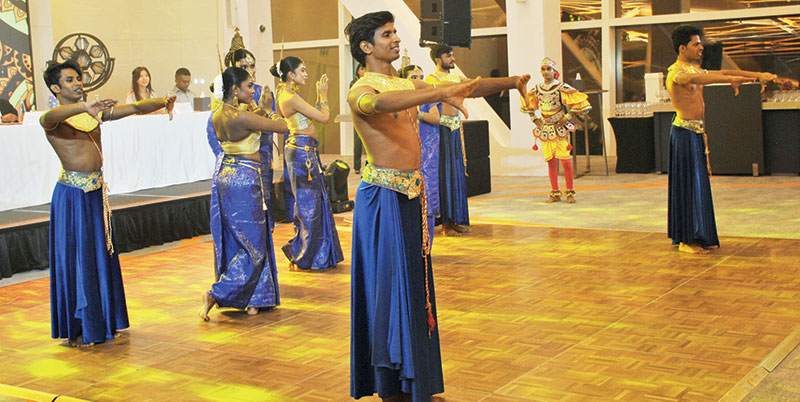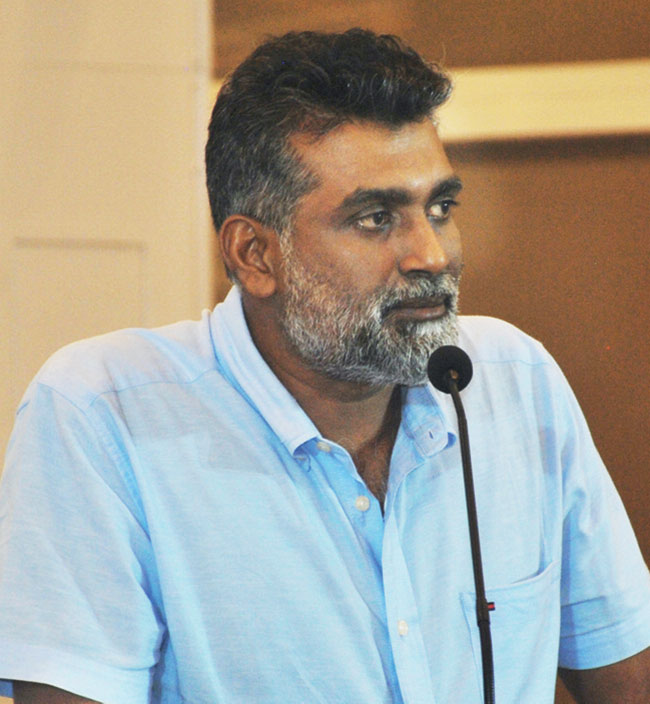Life style
A monument to all things Dutch

By RANDIMA ATTYGALLE
The Dutch Museum in Colombo, located at Prince Street, Pettah, was closed for several years for renovation. It was reopened to the public early this month. The conservation project which is nearing completion hopes to restore this archaeologically protected monument to its former glory.
More than a century since the Portuguese fortified Colombo, the city was lost to the Dutch in 1656 who remodeled the Portuguese fort. A new fortress or a citadel ringed by nine bastions, ramparts and deep moats replaced the original Portuguese-built Colombo Fort. The fort or kotuwa in the local language was known as the casteel or the castle by the Dutch. High-ranking Dutch officials lived in the casteel. Outside the Fort the surroundings are today known as Pitakotuwa or Pettah (an adaptation of the Tamil pettai meaning ‘a suburb outside a fort’). It was known as Oude Stad in the Dutch days. The Dutch, planned the town on a grid pattern with five principal streets- now known as Bankshall Street, Main Street, Keyzer Street, Prince Street and Maliban Street.
Tribute to a prince
Running parallel to Pettah’s Main Street is Prince Street – what the Dutch called the ‘Prins Straat’, named in honour of the new-born son of Kandyan King Rajasinha II. Far from its royal splendour of the past, marked by villas with lush gardens and streets shaded with green trees, Prince Street is consumed by a commercial tide today. Cutting across Malwatta Rd. – Pettah’s flea-market – lies Prince Street. (The smartest way to reach it is either on foot or in a tuk-tuk.) The street is dominated by opticians, sidewalks overrun by vendors peddling from achcharu to counterfeit branded clothing and naatamis (porters) whose calls ring in the air. It is impossible for a visitor to visualize a colonial yesteryear here. You will suddenly come upon an imposing mansion with eight colonnades of striking height looking completely out of place in these surroundings.
- Dutch Museum building in olden days
- Dutch Museum in Colombo
Monument to Dutch architecture
The only vestige of the Dutch legacy in these otherwise changed surroundings, is the Dutch Museum (as it is today). It was said to be the largest building in Pettah, as documented in ‘Streets and Buildings in the Pettah,’ published in the Ceylon Literary Register of September 2, 1887.
The villa which is also believed to have been the residence of Governor Thomas van Rhee who held office from 1692 to 1697 is a living monument to Dutch colonial architecture. Some historical sources also document the place to have been the one-time residence of Count Carl van Ranzow of Colombo.
Administered by the Department of National Museums, the Dutch Museum with its seven galleries, offers the visitor a window to Sri Lanka’s Dutch heritage. From the arrival and establishment of the Dutch to their final place of resting, the museum exhibits their way of life. The galleries are dedicated to Dutch furniture and utensils, the network of forts erected across the island, artillery and jewellery, VOC coins and tombstones portray the political and socio-economic status of the maritime provinces of Sri Lanka under the Dutch and mirror diverse aspects of life and culture of the day. With its high roofs and a gallery of columns, typical of Dutch architecture, the building had been used for different purposes over the centuries before it was finally declared a museum in 1982. It was inaugurated by President J.R. Jayewardene on July 10, 1982.
A governor’s residence, seminary and more
From Governor’s residence, it became a seminary, an orphanage or weeskamer, hospital, army barrack, police training school and finally a post office in 1932. The Latin inscription above its entrance which is still visible quotes Psalm 127: ‘Except the Lord build the house, they labour in vain that build it.’ Below this inscription is the date ‘1780’ which is believed to be the year in which the seminary was established. Dr. Jurrien van Goor in his article ‘The Rectors of the Dutch Seminary at Prince Street Colombo’ (published in the Netherlands Alumni Association of Sri Lanka (NAAL) Journal Special Edition of 1982) writes:
‘Not many buildings can be found in Sri Lanka or elsewhere in the former Dutch colonies to equal its very fine and imposing row of front columns of such height. During its long history the building was used for many purposes: but the reason for which it was built makes it all the more exceptional. Nowhere else in the Dutch colonies were founded during the eighteenth century seminaries or schools in which local youth received a secondary training. The few endeavours made at Batavia did not last long. Only Sri Lanka can boast of an uninterrupted educational record of such long duration under the Dutch’. The writer goes onto say that even the curricular of the early English schools followed the pattern of the Dutch seminary.
A museum takes shape
The building functioned as the Pettah Post Office from 1932 until 1971 when one of the sidewalls collapsed during the monsoon rains and made it uninhabitable. The question then arose on what to do with the premises. The suggestion to demolish it was opposed by the Royal Asiatic Society and the Dutch Burgher Union- the latter then led by Dr. R.L. Brohier. In his book Changing Face of Colombo, Brohier notes that ‘there is today no better example of the more imposing and typical building the Dutch erected in the Oude Stad than this monument with its high solid and substantial pillars of brick and plaster supporting the façade.’
The writer (The first Ceylonese to become Deputy Surveyor General and a noted authority on the country’s ancient irrigation works) makes an interesting observation that his great grandfather, Peter Brohier, had lived in a villa on the Prince Street (which he had purchased in 1834) opposite the Orphan Chamber. It was here too that his son (writer’s grandfather) was born two years later. The villa which Brohier refers to opposite the present Dutch Museum is replaced by a row of opticians’ premises teeming with crowds.
In 1973, a committee was established with representatives drawn from multiple state and international agencies to restore the building and establish a museum covering the Dutch colonial period. The restoration was funded by the Netherlands-Sri Lanka Foundation, founded by the late Dr. Evert Jongens. The restoration of the building commenced in 1977 and was completed in 1981 under the supervision of architect Ashley de Vos. The plan for the museum galleries was drafted and executed with the help of the Amsterdam Historical Museum.
Only green patch in Pettah
Prof K.D. Paranavitana, eminent historian and an authority on the Dutch rule in Sri Lanka who served the restoration project as a consultant, recollects procuring several pieces of Dutch furniture for the museum with the assistance of NAAL (Netherlands Alumni Association of Lanka). Among them is a cot which is one of the highlights among the collection in the ‘Bedroom Gallery’. Prof. Paranavitana who was then an archivist at the President’s Office was also responsible for the preparation of narratives for the exhibits.
“The Dutch Museum in Colombo was then a popular venue for the functions of the Dutch Embassy in Colombo and NAAL. I even had a book launch of mine in the beautiful court yard or the meda midula. This is probably the only green patch remaining in Pettah today which was once a fashionable quarter of Colombo shaded by lots of trees.”
The court yard with the unmistakable ‘Dutch-well’ which was once adorned with numerous flowering plants and foliage is being landscaped right now. The well too is under conservation. The massive cinnamon tree and the nutmeg tree found in the garden are symbolic of the spice trade which first brought the Dutch here. The side verandahs which open to the courtyard consist of several rooms that had originally served as servants’ quarters and storerooms. Today they are converted into administrative spaces. One of the rooms called ‘Hall of Death’ houses nearly 50 tombstones which were retrieved from a side alley of Prince Street when the Dutch cemetery of Pettah gave way to expanding trade centres.
Laborious conservation
The museum is home to nearly 300 exhibits today. A sizable number has already been conserved and others are still being done says the Dutch Museum keeper Thanuka Kumarasiri. The garden which is the highlight of the place too is to be restored to its former glory soon he assures. “We reopened the museum only in early July this year but we have a considerable number of visitors including foreigners. Once the place is fully done, we hope to attract more crowds,” he says adding that an admission ticket is still issued at a very nominal rate.
The conservation of the Dutch Museum in Colombo was among one of the most challenging tasks before her as the Director General of the Department of Museums says Sanuja Kasthuriarachchi. “The location of the museum in one of the most congested parts of Colombo, the COVID threat and the political and economic unrest in the country in the past few years, made the project an uphill task. Despite all challenges, this archaeologically protected monument which is more than three centuries old, that struggled to survive amidst unplanned structures surrounding it is once again open to the public.”
The conservation project is supported by the State Engineering Corporation and the Department of Archaeology. “We have now reached the final stages of the project and we hope to restore this iconic building into a traditional Dutch home where visitors can step into a tranquil space in the busy commercial hub of Colombo and relive a bygone era,” says Kasthuriarachchi. She invites the public to donate any memorabilia from the Dutch era to the museum which stands as an enduring monument to the Dutch legacy.
Dutch Museum at Prince Street Pettah is open from Tuesday to Sunday. Closed on Mondays and public holidays.
(Pic credit: Randima Attygalle, Department of National Museums & Prof. K.D. Paranavitana)
Life style
Kevum – Befitting a King
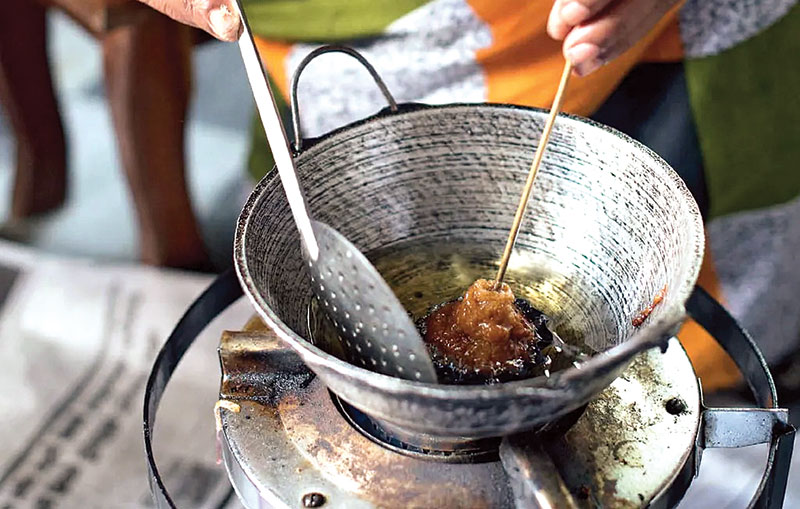
The avurudu table of any Lankan home is complete only when it is laden with kevum. Dating back to ancient times, many types of kevum are chronicled even in our classical texts. The Dutch rulers of the island are said to have relished them, some even asking if they grew on trees… A delicacy which was offered to visiting dignitaries, kevum was revered by our kings even in the battle field not only as an energy-booster but also as a wound disinfectant.
BY RANDIMA ATTYGALLE
The culmination of Avurudu preparations in my childhood with my grandparents was marked by the ritual of Kevum-making. Athamma would ‘book in advance’ the kevum specialist Soida Hami (Soida aachchi to us children), and install a special hearth in her back verendah for the grand moment. I would watch Soida aachchi in wonderment as her thick batter of rice flour and best of kithul treacle shaping into kevums in a hot wok of coconut oil. The long kevum koora in her nimble fingers would achieve the feat of the perfect konde. It was almost a rite of reverence, so much so I was not supposed to talk to her until the first batch of Konda-kevums was completed. Like many old-folk of her vintage, Soida aachchi believed that talking while the first few kevums are done would result in a flawed product.
She would then place each perfect Konda kevuma on a banana leaf for the excess oil to drain. Once the whole exercise was completed, she would place Konda-kevum in large earthen pots and store them in the dum messa or the storage area above the main hearth of the kitchen. She would spare me only one kevuma and the rest had to wait until the auspicious time on avurudu day!
Travellers’ records
Robert Knox an English sailor who was held in captive in the court of the Kandyan King Rajasinghe II and one of the prolific chroniclers of ancient Ceylon in his famous work, An Historical relation of the Island Ceylon documents on the sweet meats of Lankans with a special account of kevum.
‘They have several sorts of sweet-meats. One they call Caown. It is like to a fritter made of Rice-flower and Jaggory. They make them up in little lumps and lay them upon a leaf, and then press them with their thumbs and put them into a frying-pan and fry them in Coker-nut Oyl or Butter. When the Dutch came first to Columba, the King ordered these Caown to be made and sent to them as a royal treat. And they say, the Dutch did so admire them, that they asked if they grew not upon trees, supposing it past the Art of man to make such dainties.’ (Spelling as in the original Knox)
The account of Knox enables rich insights into this wonder of a sweet meat which enthralled many a traveller to the island including dignitaries. The European trader Cosmas who visited Ceylon in 545-550 AD, documents that along with gems, Kevum and Kalu dodol from Ceylon were taken to the Roman court of Emperor Claudius during the sixth century.
- Mun kevum
- Konda kevum
- Athirasa
Classical literature
Kevum dates back to ancient times and our classical texts such as the Ummagga jatakaya, Pujawaliya and Saddharma Ratanawaliya bear evidence to this fact. “Originally known as poopa this sweet meat came to be known as kevum in the Dambadeniya-Kurunegala era. Jathaka atuwa getapadaya mentions 18 kinds of sweet-meats found in the ancient Sri Lanka and among them are several types of kevum such as sendi kevum, mal kevum, athirasa, pena kevum, raa-kevum,” says Prof. Kusumalatha Lankamulla from the Department of Sinhala and Mass Communication at the University of Sri Jayewardenepura.
This scholar with research interest in Culture, Traditional and Modern Literature goes onto note that Mahawamsa in its 32nd chapter refers to two types of kevum in the context of alms offered by King Dutugemunu. The two types- thel kevum and maha de kuvum mentioned, were fried in ghee. “Many of our classical texts mention kevum in multiple festive contexts beyond avurudu. In Ummagga jathakaya, kevum is mentioned as a fitting gift to be taken when visiting parents. Saddharma Ratanawaliya refers to boxes of kevum or kevum pesa.“
An energy booster
Among the popular kevum types found today are Konda kevum, athirasa, mun-kevum, naran kevum and hendi-kevum. Although the ingredients used for each type may slightly differ, rice flour and treacle (now largely replaced with sugar) remain common to all. The much sought after Konda kevum which is relatively a later addition to the range of kevum found here at home is believed to have originated during the Kandyan period says Prof. Lankamulla. “During the Kandyan period, men were prohibited from cutting their hair off and they had to tie it in form of a knot on top of their heads. Konda kevuma is believed to have been inspired by this practice.”
Traditionally, Sinhalese soldiers were given a bag of kevum when going to war. History has it that King Dutugemunu went a step ahead and used kevum to treat wounded soldiers. His army used to prepare kevum months in advance and keep them exposed to air so that the mould can grow on them.
This mould in today’s language had ‘antibiotic properties’ and was used on the wounds of the soldiers to prevent them from festering. “In a bid to undermine the pride of place given to kevum as a super food by the locals, the British coined the famous derogatory adage: ‘Sinhalaya is a fool but is an ace at eating kevum’. (Sinhalaya modaya-kevum kanna yodaya)
Steeped in tradition
Superstitious beliefs surrounding the process of kevum-making are not uncommon and these vary from region to region in the island, says Prof. Lankamulla. Regardless of the region, several common traditions were followed by our ancestors and these still continue to be observed in several parts of the country, she says. “The frying pan with coconut oil to prepare the kevum was kept on fire at an auspicious time and village matriarchs who were highly skilled were mobilized for the occasion. Women also believed that they must refrain from talking when the first kevum is being made. For centuries, the first kevum was considered to be the ‘konduru kevum’, dedicated to the sledge-fly or the konduruwa. The village women would hang the first kevum up for the insects so that the rest would be unspoilt.”
With the passage of time, many Lankans, particularly city-dwellers depend on commercially available avurudu kevili including kevum. Although kevum is synonymous with avurudu, today people get to enjoy it round the year thanks to many sweet meat kiosks found in cities. Although these outlets have best sales during avurudu, they get plenty of orders from Lankans travelling abroad or coming home for vacation at other times of the year as well.
One such die-hard kevum fan is Uthpala Ranatunga from Ottawa, Canada. “My Loku amma (oldest aunt) makes it a point to pack me a parcel of best quality Konda kevum to take with me whenever I’m in Sri Lanka for a vacation.
I deep-freeze them for longer use and eat them sparingly,” says Uthpala to whom kevum is always a strong reminder of home. “Each time I indulge in them I feel nostalgic and miss home.”
Kevum is an integral part of the Lankan culture, finding its way from ancient classical literature to that of the contemporary including children’s literature and arts. The much-loved sweet meat is celebrated in the work of Sybil Wettasinghe – the iconic story teller and illustrator.
Come avurudu, we often hear the intonation of Lionel Ranwala, the eminent musician, vocalist and an authority on Sri Lankan folk music, whose tribute to the enduring legacy of this delicacy is one of the best in our times:
Me avurudu kale -sinaha weyan rale
Thel ihirunu kewum gediya wage…
Life style
Festive glamour at Nethara
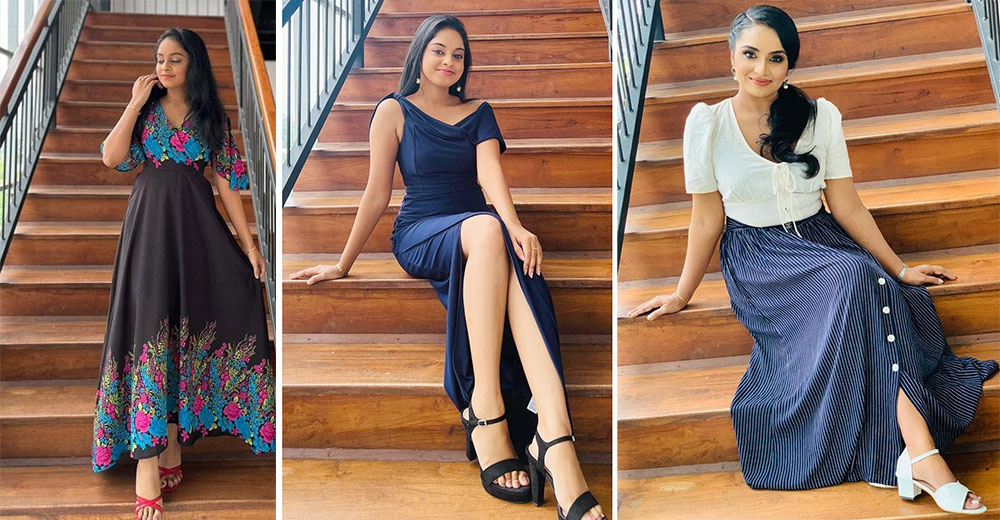
Nethara Collection ,is a world of export quality garments in Diulpitiya, Boralesgamuwa, is infused with an ultra festive spirit this season catering to the women of today. Unbelievable offers and discounts from Nethara for Sinhala anTamil new year. On selection of women’s clothing, ranges from casual options to formal occasion wear,all at friendly prices,to enhance your wardrobe this festive season.
Nethara collection, started small in 2017, but soon it outgrew, today with an ever increasing customer base, branded and non branded clothing this shopping centre has become very popular. Export quality , stylish dresses, crop tops, fancy blouses, trousers and many more to flaunt yourself and enhance your wardrobe.Their extensive collection, maintain low pricing allowing everybody to have a chance to shop till they drop dead. From casual wear to formal wear,they have women to men’s items like tee shirts, shirts for every occasion.
Nethara clothing has long remained a name that has struck a chord with Sri Lankan shoppers. “We believe our success has been based up on the premise that absolute sincerity towards customers and no matter what the economic situation that prevails, we try our level best to keep our prices low and within everybody’s budget, said managing director, Nethara Collection Sampath Kumara.
This April season Nethara collection brings an all new collection of export quality seasonal wear. Celebrate the season with exclusive offers made just for you! Dresses, blouses, casual, formal wear denim, men’s shirts and many more… world of limitless style and joy!
This festive season Nethara unwraps a celebration of warmth, style and sophistication. Immense yourself in a vibrant festive atmosphere as you explore thier collection under one roof 345 Boralasgamuwa With a focus on quality, affordability and customer satisfaction, Nethara export quality boutique invites you to celebrate the Sinhala and Tamil New Year in style.
(Zanita)
Life style
Sri Lanka tourism unveils strategic vision

Sri Lanka Tourism Bureau hosted a landmark event at cinnamon Life for an ambitious campaign to spotlight Sri Lanka as a top travel destination. This initiative hosted international influencers and local media to capture the unique charm of Sri Lanka’s destinations. These travel influencers will share thier real time content across platforms like Instragrams Tik Tok and youtube amplifying Sr Lanka as a must visit destination. Many media personal, bloggers and influencers participated in this event which will take them on a tourism travel featuring some of Sri Lanka’s top destination.
Sri Lanka Tourism Promotion Bureau (SLTPB) hosted a landmark event at the Cinnamon Life Hotel, Colombo. The event was led by . Deputy Minister of Tourism, Prof. Ruwan Ranasinghe, with the participation of SLTPB Chairman Buddika Hewawasam, officials, travel influencers and their families, as well as journalists specializing in tourism sector reporting. The gathering set the stage for transformative initiatives aimed at bolstering Sri Lanka’s tourism sector and redefining its global image.
In his opening remarks, Buddika Hewawasam underscored the challenges facing the tourism sector, particularly the seasonal dip in arrivals during the summer months. “The next few years will be the most challenging period for all of us,” Hewawasam stated, emphasizing the need for international collaboration and strategic development. He further highlighted the critical role played by international travel influencers and media professionals in raising awareness of Sri Lanka’s hospitality and inspiring tourists worldwide to visit.
- Dileep Mudadeniya
- Deputy Minister of TourismProfess or Dr Ruwan Ranasinghe
- Guests
The Deputy Minister of Tourism, Prof. Ruwan Ranasinghe, detailed the innovative nature of the campaign and its importance in showcasing Sri Lanka’s rich heritage, natural beauty, and diverse travel experiences to mainstream and emerging tourism markets.
During the event, several prominent travel influencers shared their thoughts about Sri Lanka’s uniqueness as a destination. They highlighted that Sri Lanka is a country where travellers don’t need to worry about finding incredible experiences—nature has already done the hard work. The influencers remarked on Sri Lanka’s unparalleled diversity, noting that it is possible to experience a range of climates within just a few hours by travelling to different parts of the island. From sun-soaked beaches to misty highlands, and from lush forests to cultural treasures, Sri Lanka offers a world of adventures in a compact and accessible setting.
In comparison to destinations like Bali, which some influencers noted as overcrowded, Sri Lanka stands out with stable and balanced tourism activities. The event attendees were thrilled by the country’s warm hospitality, authentic DDirector cuisine with an impressive variety, long history, and rich culture. These qualities make Sri Lanka not only inviting but genuinely unforgettable for visitors.
The travel influencers in attendance expressed strong confidence in their ability to share this powerful message with the world. They were determined to shape international travel trends by showcasing Sri Lanka’s unique appeal, while also helping to attract new types of guests. The influencers represented a diverse range of travel segments, including family travellers, solo female travellers, honeymooners, and adventure seekers. Their efforts were supported by Sri Lanka Tourism officials and journalists representing both local and international media agencies.
The ‘Sri Lanka, A Story for Every Season’ campaign represents SLTPB’s first large-scale effort to boost summer travel through digital storytelling and influencer collaboration.
Featuring a curated destination familiarization tour, the campaign will spotlight wildlife safaris, cultural heritage, spiritual pilgrimage sites, scenic landscapes, and adventure tourism. Influencers will produce high-impact content for platforms like Instagram, YouTube, and Facebook, reaching over 2.2 million travel enthusiasts globally.
Sri Lanka Tourism shared impressive winter peak season results, with international arrivals reaching 665,295 by March 23, 2025—a marked increase compared to the previous year. These figures illustrate the sector’s potential for growth, and the campaign aims to sustain momentum throughout the summer months.
The event was a call to action for stakeholders to unite in elevating Sri Lanka’s global tourism appeal. With plans to generate over LKR 32 million worth of media coverage and connect with diverse travel segments, the campaign underscores Sri Lanka’s commitment to redefining itself as a leading destination for year-round travel.
By Zanita Careem
Pix by Darmasena Welipitiya
-

 Business1 day ago
Business1 day agoDaraz Sri Lanka ushers in the New Year with 4.4 Avurudu Wasi Pro Max – Sri Lanka’s biggest online Avurudu sale
-
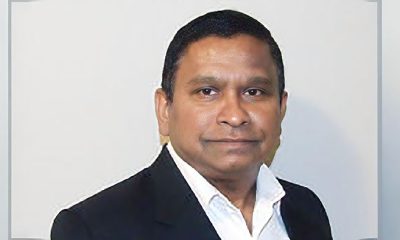
 News6 days ago
News6 days agoBid to include genocide allegation against Sri Lanka in Canada’s school curriculum thwarted
-

 Business2 days ago
Business2 days agoStrengthening SDG integration into provincial planning and development process
-

 Business1 day ago
Business1 day agoNew SL Sovereign Bonds win foreign investor confidence
-
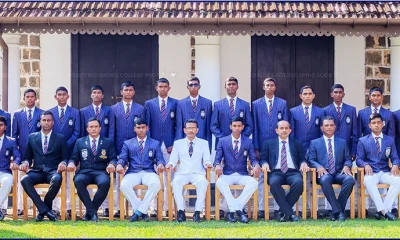
 Sports3 days ago
Sports3 days agoTo play or not to play is Richmond’s decision
-
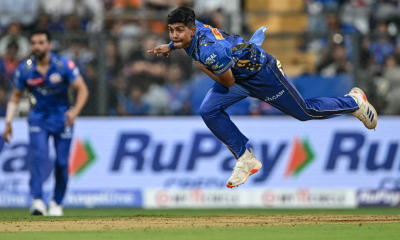
 Latest News5 days ago
Latest News5 days agoIPL 2025: Rookies Ashwani and Rickelton lead Mumbai Indians to first win
-
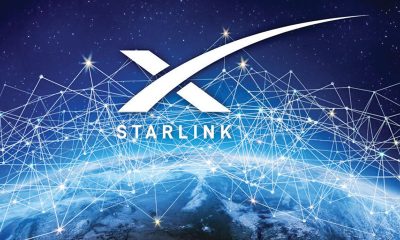
 Features11 hours ago
Features11 hours agoStarlink in the Global South
-

 Sports4 days ago
Sports4 days agoTrinity, St. Anthony’s out to end decade long victory drought

